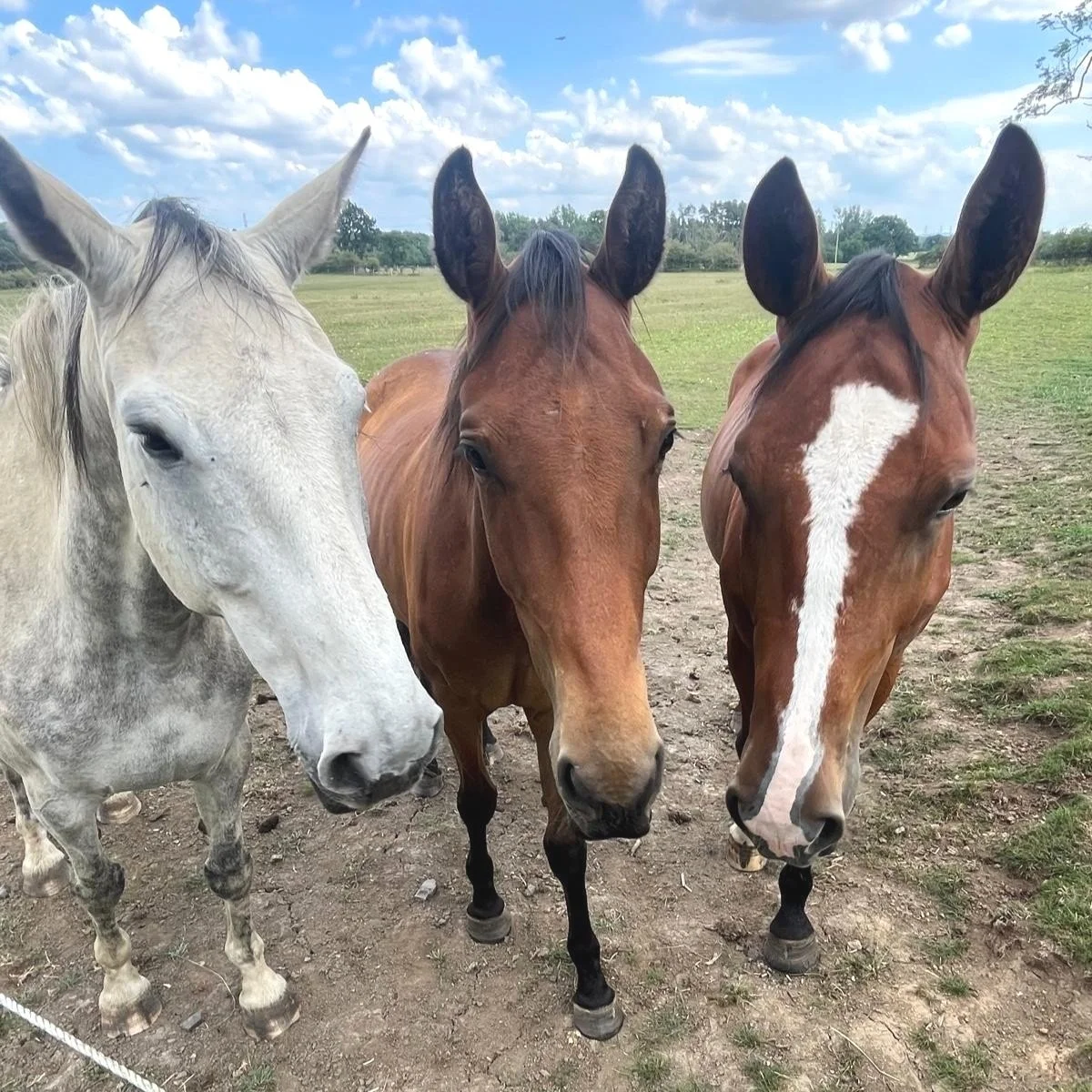Staying Fit Without Overheating: Keeping Your Horse in Work This Summer
Stable Talk #02 (July 2025)
Summer is a brilliant time to enjoy riding. Still, it does come with a few extra considerations, especially if your horse is in regular work, coming back into fitness, or preparing for competition. Rising temperatures, dry spells and hard ground can make it harder to strike the right balance between staying fit and staying safe.
Here’s how to help your horse stay in consistent, comfortable work through the warmer months.
1. Work Smarter, Not Hotter
Avoid exercising in the midday sun. Early mornings or cooler evenings are much kinder on both horse and rider, and help reduce the risk of heat stress.
Watch for signs of overheating: excessive sweating, fatigue, rapid breathing or reluctance to work should all prompt you to stop and cool down.
2. Hard Ground? Here’s Why It Matters—and What to Do
A long, dry spell might mean sunny days and lovely hacks, but it also brings hard, unforgiving ground. This isn’t just an inconvenience—it can pose real risks to your horse’s health and soundness.
Why does hard ground matter?
Once-soft bridleways and paddocks quickly turn solid underfoot in the summer. That change in surface can cause a number of issues:
Increased concussion on limbs – Hard ground doesn’t absorb shock well, so every stride sends more force up through the legs. This can lead to splints, bruising, tendon strain, or even concussive laminitis.
Hoof soreness and bruising – Dry conditions can cause hooves to contract or become brittle. Horses may show discomfort or develop bruises and abscesses.
Fatigue and compensation – Some horses adjust their stride to avoid jarring, which can lead to uneven muscle development or secondary injuries.
Dry summer of 2025 - boys in the field Marty, Harley & Boss (left to right)
What can you do?
Start by reassessing your usual riding routes—fields, gallops or bridleways that were safe a few weeks ago may now be rock solid. Avoid fast work, jumping, or tight turns on hard ground wherever possible.
A few practical ways to adapt:
✔ Protective footwear – Hoof boots can help barefoot horses, and your farrier may recommend pads or shock-absorbing materials during the summer.
✔ Switch up the surface – Opt for schooling arenas that retain moisture or have fibre footing.
✔ Lower the intensity – Mix in groundwork, pole work, or hacking in shaded areas instead of high-impact sessions.
✔ Use a water treadmill – The treadmill provides all the cardiovascular and muscular benefits of a workout, without the concussive force. It’s one of the safest ways to keep your horse fit when the ground turns against you.
Soft poles are a great solution for pole work
Post-ride care matters too.
After working on any harder surface, check legs for heat or swelling. Hose down with cool water and allow plenty of recovery time, especially for older horses or those coming back into work. You could also use ice boots, clay, or cooling gel.
We would recommend the TRM Staysound Leg Clay and the Cool As Ice Cooling Gel by Equine Products. Get in touch with their Northern Sales Rep Marcia Thompson via Email or Phone
3. Train Without the Impact: Try a Water Treadmill
When hard ground rules out fast work or schooling, a water treadmill offers the perfect alternative. It allows your horse to exercise in a controlled, cushioned environment, supporting fitness goals while dramatically reducing the risk of concussion injuries.
How does it work?
Your horse walks (or gently trots) on a moving belt submerged in water. The depth of the water can be adjusted, and this resistance helps develop topline, core strength, and cardiovascular fitness, all without placing strain on joints, tendons or hooves.
The benefits of a water treadmill include:
Low-impact conditioning – Ideal for maintaining fitness when turnout is limited or ground conditions are unsuitable.
Strength and symmetry – The water resistance encourages correct posture and even movement, helping to build balanced muscle tone.
Improved topline and engagement – The treadmill encourages lift through the back and engagement of the hindquarters.
Safe cross-training – Great for horses needing variety in their routine or mental stimulation alongside ridden work.
At Seven Mile Equine, our treadmill is suitable for horses of all disciplines and stages of fitness, from young horses in light work, to high-level performance horses needing to maintain peak condition, to those coming back from time off or injury.
Whether you're aiming to stay on track with your training goals or simply want to give your horse a supportive, low-stress workout, water treadmill sessions are a smart and modern way to train through the summer.
4. Stay Cool: The Power of Chilled Water Therapy
Our treadmill at Seven Mile Equine uses chilled water to add an extra layer of recovery and comfort.
Benefits of chilled treadmill sessions include:
Reduced inflammation in limbs and tendons
Faster post-exercise recovery
Support for horses prone to swelling or heat stress
A refreshing and engaging alternative to schooling
It’s ideal for horses in rehab, older horses, and anyone needing to avoid summer strain.
5. Keep Hydration and Cool-Downs in Mind
Always ensure your horse has access to fresh water. For those in regular work or travelling, consider adding electrolytes to help replenish salts lost through sweat.
After exercise, walk your horse in hand to cool down slowly. Use cool (not ice-cold) water to rinse.
6. Be Flexible With Your Routine
You don’t have to ride every day to maintain fitness. Consider mixing it up with:
Pole work or groundwork on softer surfaces
Woodland hacks for shade
Gentle early morning schooling
Treadmill sessions that support both body and mind
And if it’s simply too hot, take the day off. A rest day is often the wisest choice.




